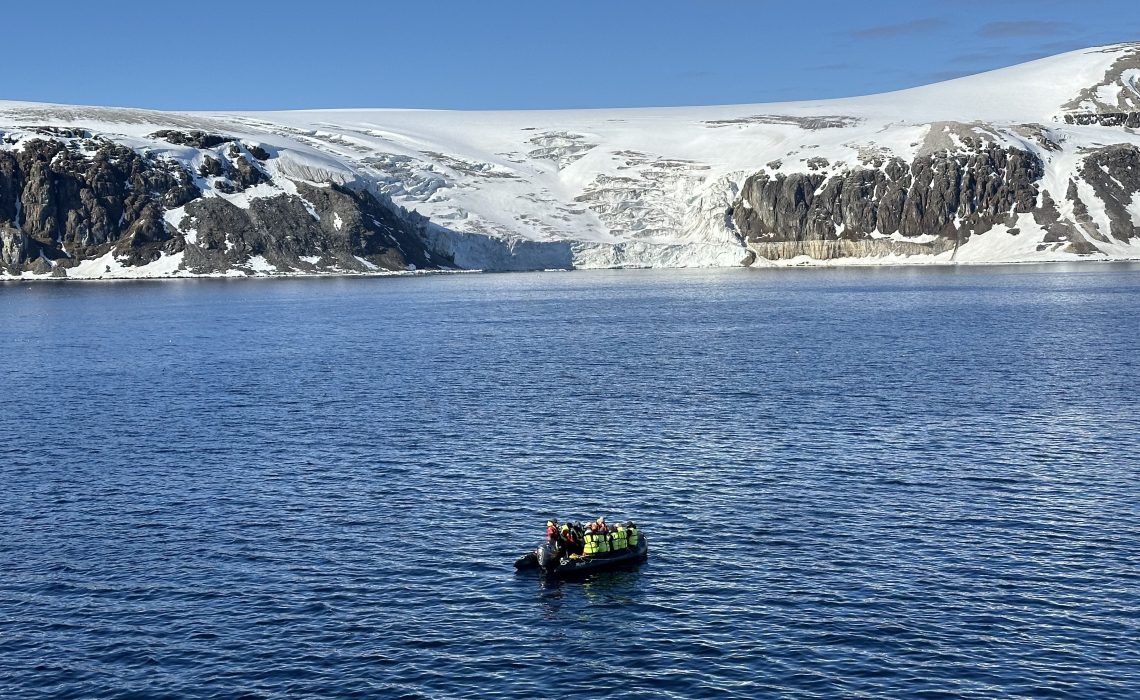
Choosing a trip
What’s the first thing you think about when planning a trip to the Arctic? Most probably, will I see a Polar Bear?
What’s the second thing you think about? Which of the many trips should I go on and which am I and my party best suited to?
Both are very good questions.
List to my audio introduction above
Any ‘holiday’ in the far north or south of our world is an expedition. However, having experienced a three week voyage with Polar Latitudes, visiting the Falkland Islands, South Georgia Island and Antarctica, two of the three of us had a pretty good idea of the level of fitness that was needed for these trips. Polar Latitudes state ‘The most important thing is to have a ‘can-do’ attitude, coupled with ‘a spirit of adventure’ – well you probably wouldn’t be considering these trips if you didn’t have adventure in mind, but the ‘can-do’ attitude certainly helps.
The Zodiacs
However adventurous you might be in your own mind, you do need to be able to get in and out of a zodiac, swinging your legs around for the getting out part. Landings ashore can still mean that you are stepping into the sea, how far you can slide up to the front of the zodiac can make a difference to how deep you are stepping into. But rest assured the almost knee length rubber boots you are loaned keep your feet warm and toasty. And there are always crew ashore to lend a helping hand and walking poles are available once you are ashore to help you with rocky terrains.
Of our party of three, we had ‘two knee replacements’ and one ‘in recovery from significant treatment’. So, we chose our trip to the Arctic accordingly and booked Hurtigruten’s ‘Circumnavigating Spitsbergen – In the Realm of the Polar Bear’, onboard the MS Spitsbergen, feeling it would give us enough of an adventure to feel like explorers but would be manageable for all parties concerned. Whether it would be enough of an adventure to see a Polar Bear remained to be seen, but we were hopeful. Expectant even!
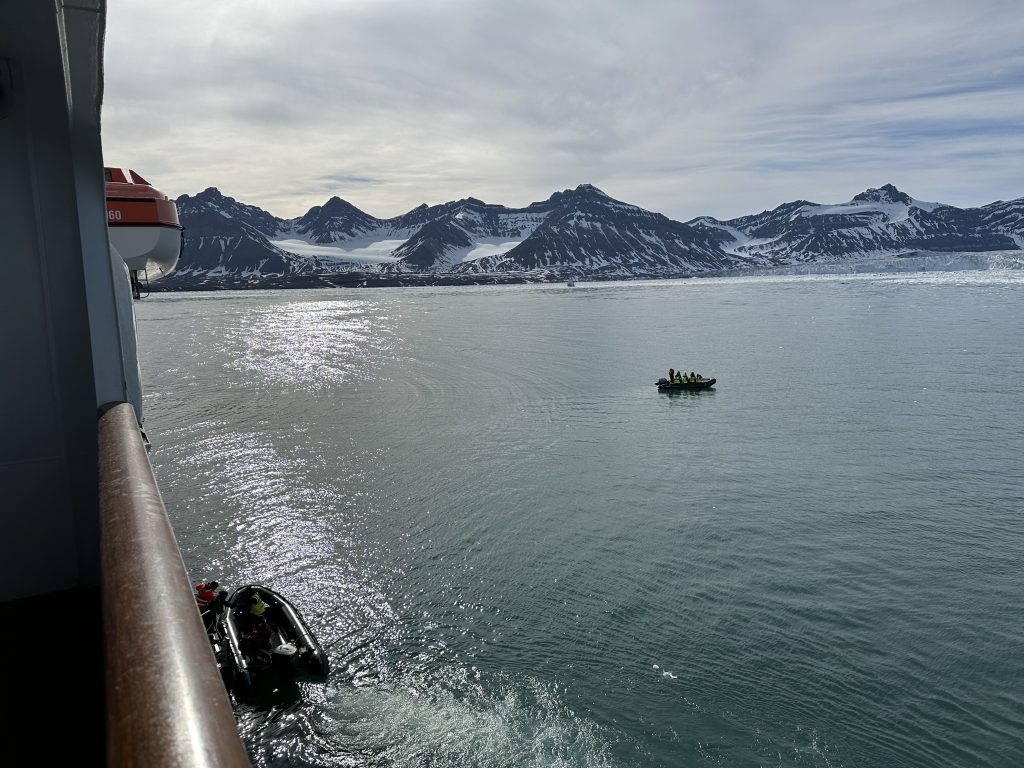
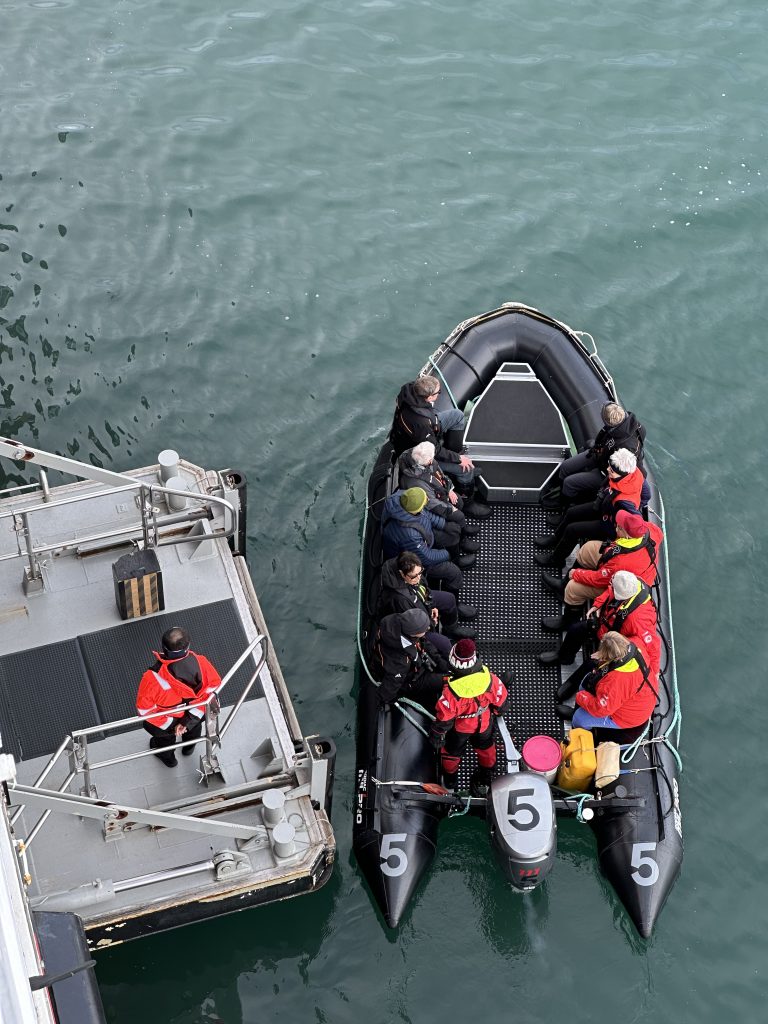
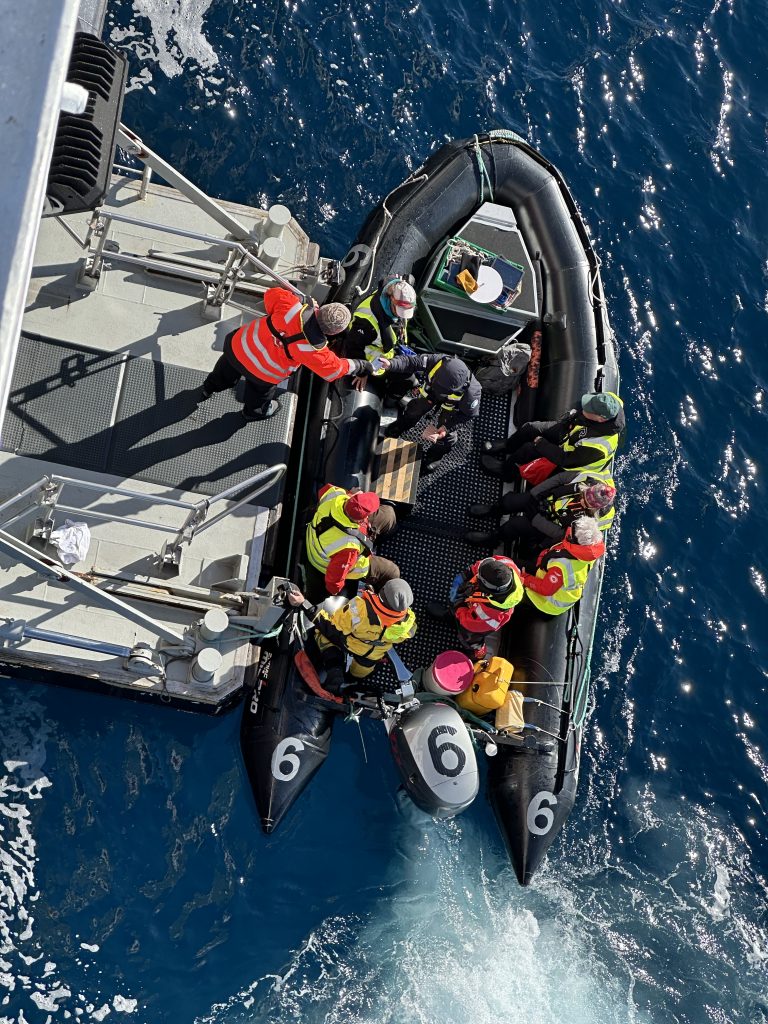
Safe to say everyone on the ship, of all ages managed the zodiacs well, mainly down to the excellent organisation and safety methods in place. The crews on these voyages are incredible and in our experience, we have always felt in very safe hands, even in rough seas.
Support SueQsWorld Writing: Empower Creativity, Enrich Lives. It’s always optional but your Donation to SueQsWorld writing is more than just financial support; it’s an investment in creativity, diversity and the transformative power of words. Join me in my mission to enrich lives and inspire change. Every contribution, no matter the size, makes a difference. Click on the Donate button, top right hand side of the page for more information.
What Are The Seas Going to be Like?
This is another good question. For two of us (hubby and I) we had experience the Antarctic trip as mentioned, and better understood what the weather could throw at you in our Southern Atlantic Ocean but our friend that was joining us, this was his first ‘cruise’ experience. Another good reason for choosing this particular trip. But first let me explain a little about Svalbard’s geography. An archipelago of islands, as a whole its called Svalbard, the left and largest of the islands is called Spitsbergen. Here’s a map, oh and it shows where we actually went on our trip – why we didn’t circumnavigate it is just below.
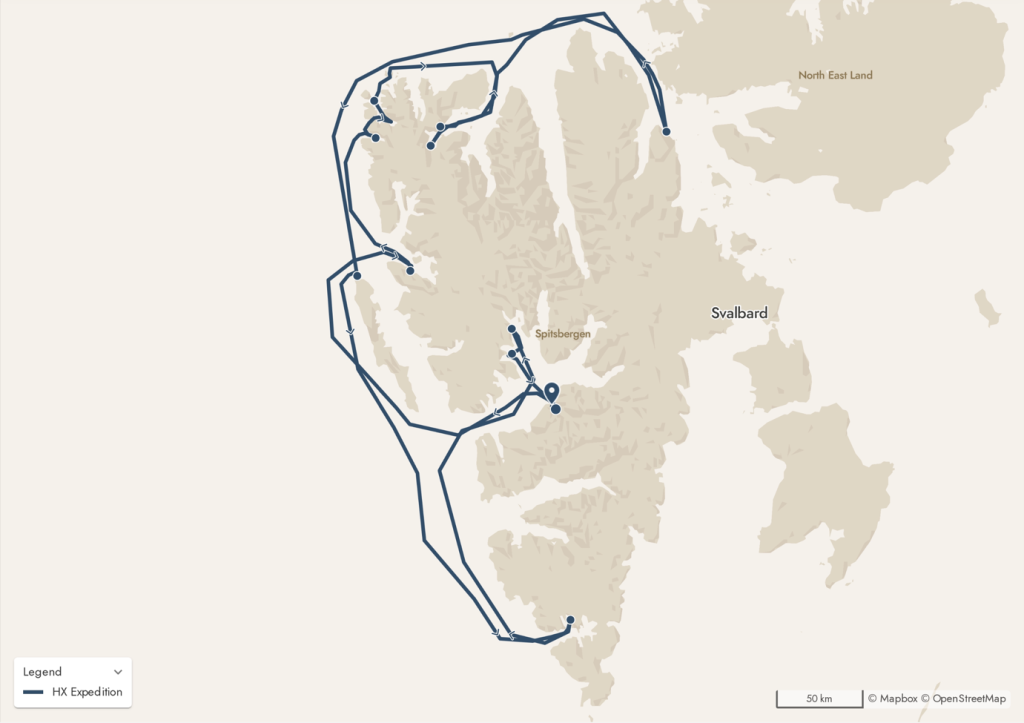
As you can see, the voyage mainly hugs the coastline, and doesn’t cross any seas or go out much into the open ocean, so that meant that whatever the weather threw at us, even high winds, it shouldn’t be too uncomfortable onboard. We had mainly perfect weather except for one night and day when a bit of a storm meant choppy seas and high winds, as we sailed back south towards Hornsund.
We all know that wildlife doesn’t play ball, can be difficult to track or spot and the weather at both of our poles dictates how a trip unfolds. For our Arctic trip, there was much more ice than has been in the past several years – fantastic for the Artic wildlife – which meant we couldn’t circumnavigate Spitsbergen as planned. That was going to have an impact on our potential for bear spotting – read the next blog to find out why.
How Cold Is it Going to Be?
Another good question. We had fantastic weather on our Artic trip – mainly it was clear and sunny. It was still cold of course, especially when there was wind and on the zodiacs, especially when cruising. Taking lots of layers is vital.
We packed thermal underwear, though only wore the leggings on a couple of days when we were cruising on the zodiacs at Monacobreen, seeing the impressive Monaco Glacier and on our last day in the bay at Yoldiabukta again on zodiacs in the ice .
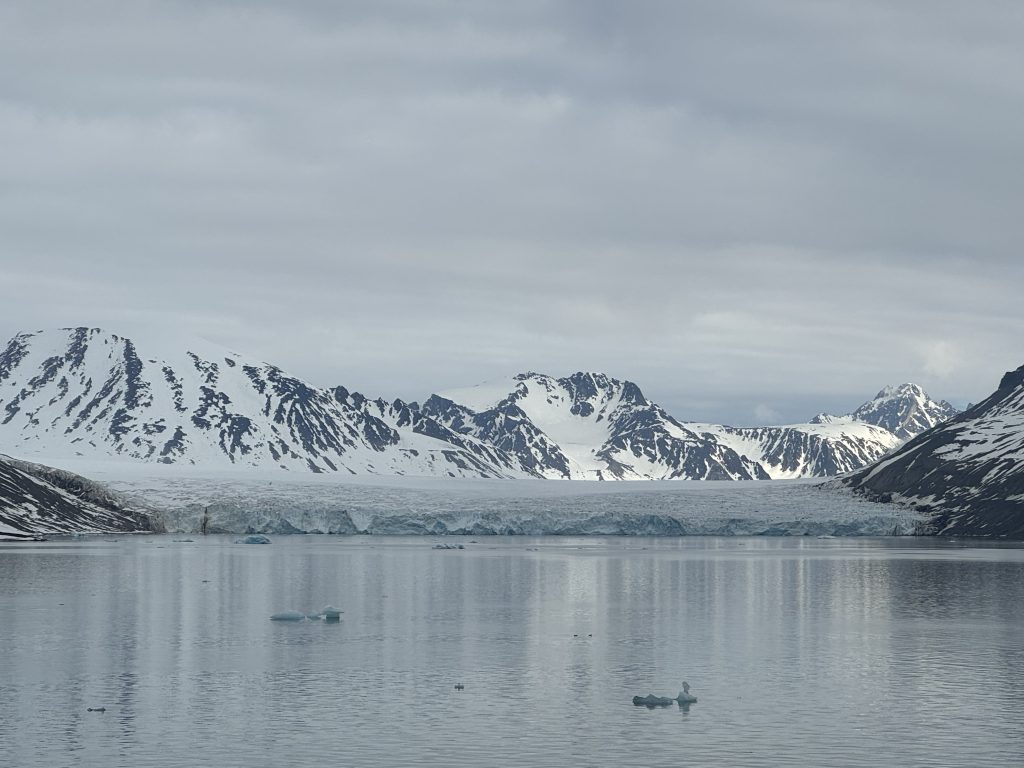
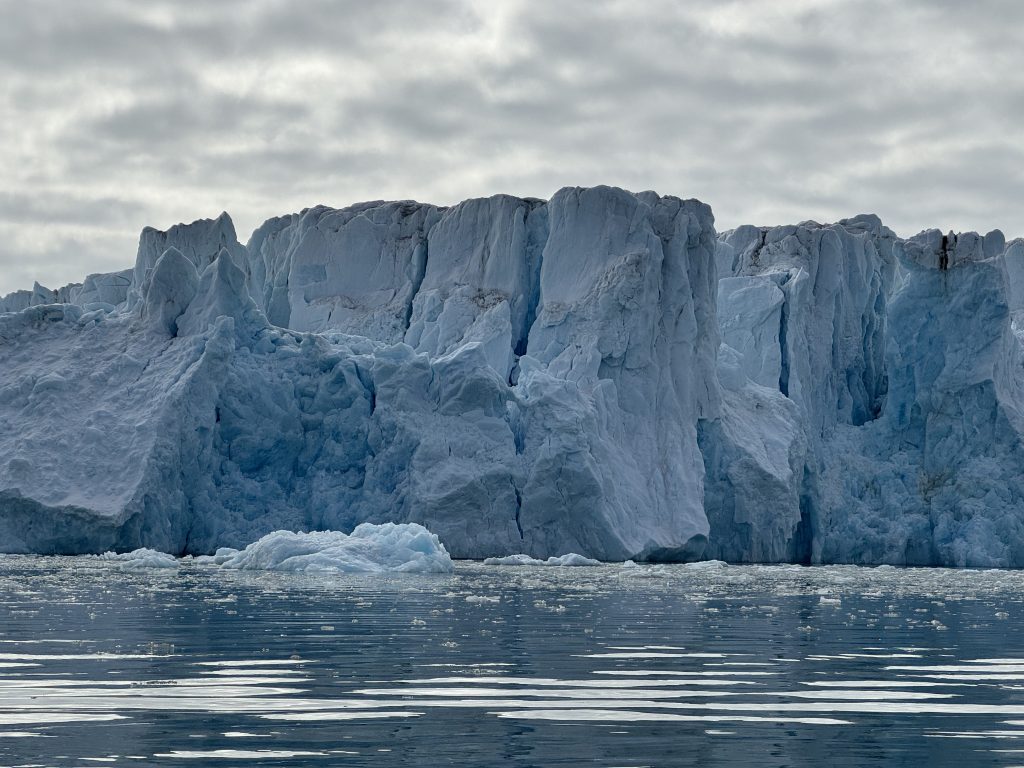
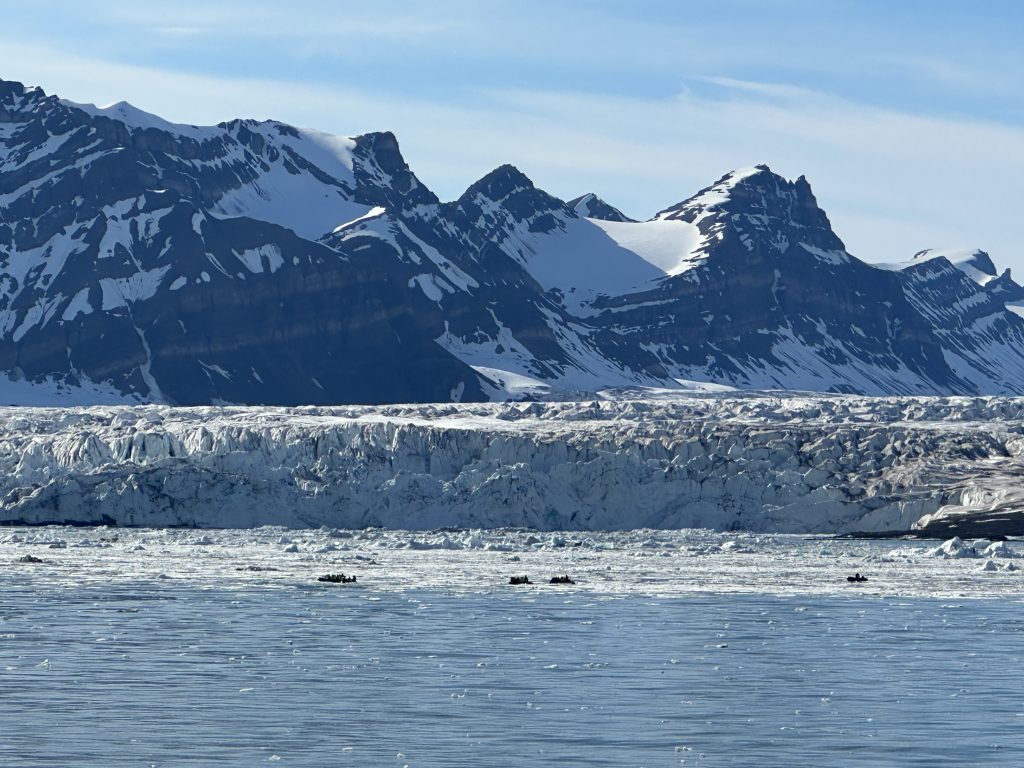
The jackets supplied onboard are windproof and waterproof, and the windproof bit is essential. Most of the time, I wore a thin long sleeve roll neck top, with my padded jacket from the Antarctica trip and the waterproof jacket provided. With a neck buff and warm gloves this was more than adequate and towards the end of trip, it became quite warm, especially when ashore and walking. We had between 2 or 3 degrees C and 6 or 7 degrees C on some afternoons. It can get much warmer later in the season.
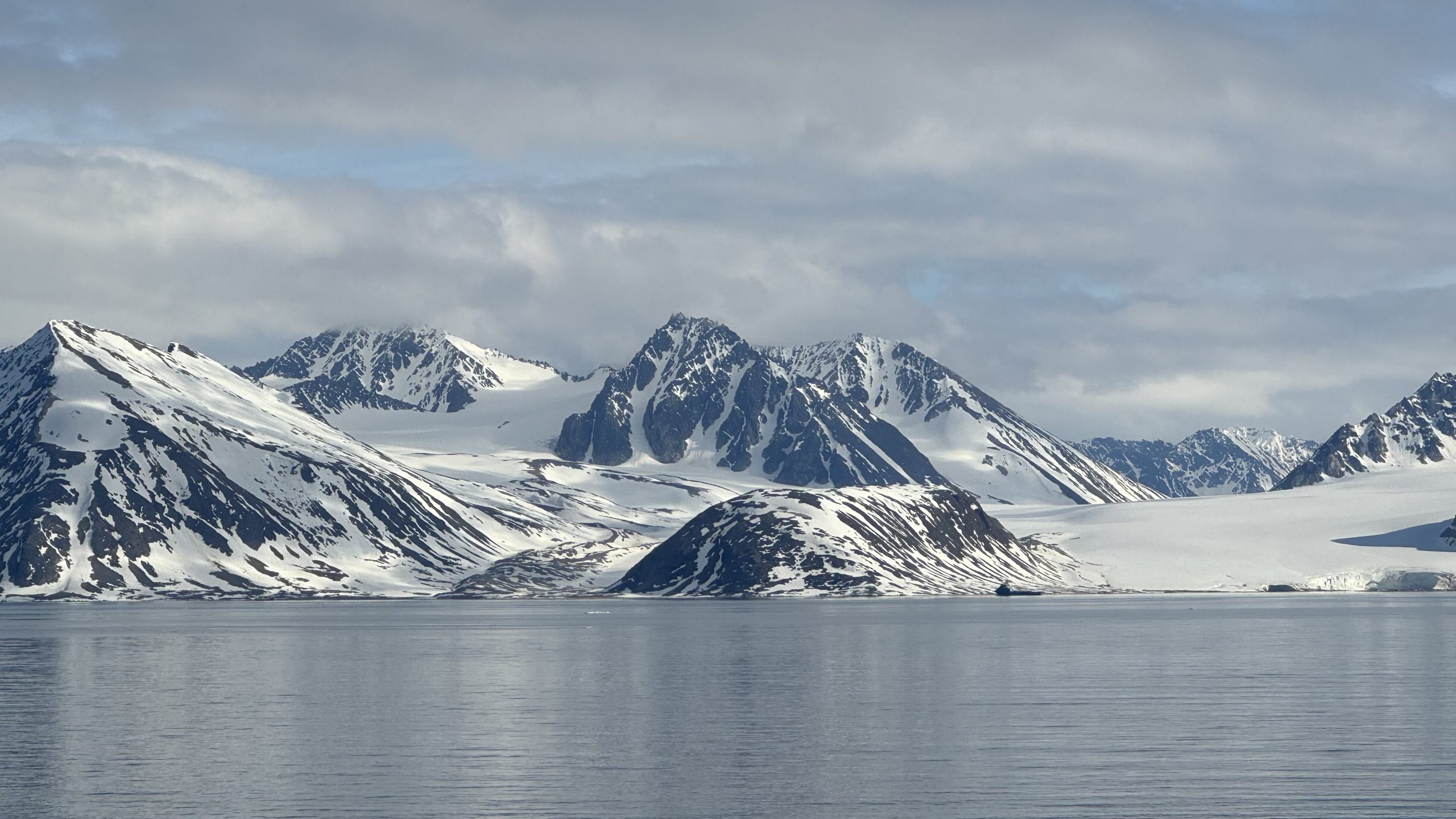
Both the Arctic and South Georgia/Antarctica are incredibly special places to be able to visit. If you are planning trips to either, think about what is important for you to experience, whether thats specific wildlife, history, geology or glaciers to name a few. The voyage operators will prepare you well with what you need to take with you, how agile you will need to be and what you can expect. Don’t be put off by worrying about getting into zodiacs or the weather, but do remember how fragile these environments are and think about how you might become ambassadors for the regions you visit and how you can contribute to the organisations that are working hard on conservation and restoration, not just for the planets wildlife and the climate, but also to make tourism to these regions sustainable and to strengthening local communities.
Here are links to some charities I consider are worth contributing to for conservation and restoration of our polar regions:
The Polar Citizen Science Collective
